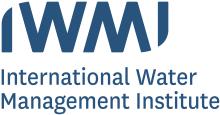Resource information
Electricity subsidies for farmers are an expensive legacy of past development policies. The result is overuse of both energy and water in groundwater-irrigated agriculture?threatening the financial viability of the power sector and the future of the groundwater resource itself, along with the livelihoods of the millions who depend on it. The most popular solution is the metered tariff, promoted by international donors and many of India?s state governments. But metering is the ideal solution only if the cost of metering and billing 14 million scattered, small users in India, Pakistan and Bangladesh is ignored. Easier, more feasible and more beneficial in the short run in many parts of South Asia would be the use of a rational flat tariff, which avoids the transaction costs and strong farmer opposition associated with metering. The flat-tariff option has been ignored because, in its current incarnation, it has proved a complete failure. However, combined with intelligent power supply rationing, it is a logical, viable alternative which could cut wasteful groundwater use by 12-18 km3 per year in Western and Peninsular India alone. The approach would involve (1) gradually raising tariffs to cut power utility losses; (2) supplying farms with fewer hours of power per year, but ensuring a quality power supply during periods of moisture stress; and (3) metering at the feeder level to measure and monitor farm power use, to allow good management.



